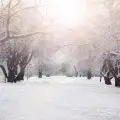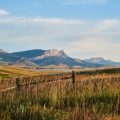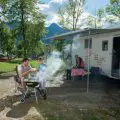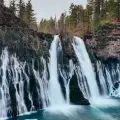Hey! This site is reader-supported and we earn commissions if you purchase products from retailers after clicking on a link from our site.
When you hear someone talk about visiting Death Valley, the topic might conjure up images of sun-bleached bones and cracked earth under a blazing sun. Death Valley, however, is full of life and abundance. Even among the shifting sand dunes, there is a surprising array of flora, fauna, and most importantly, adventures for travelers. Despite the arid climate, Death Valley National Park is a beautiful and mysterious destination.
Planning a trip through the driest and hottest location in America? Then you are going to need to know what to do in Death Valley National Park. Guess what? We’ve found over 20 things to do in Death Valley to get your itinerary started.
Take a look.
Table of Contents
- About Death Valley National Park
- When is the Best Time to Visit Death Valley?
- What to Bring to Death Valley
- What to Do in Death Valley National Park
- 1. Drive All The Death Valley Roads
- 2. Explore the Dunes of Stovepipe Wells
- 3. Go For a Hike Around Badwater Basin
- 4. Visit Mars, also known as Zabriskie Point
- 5. Have a Heck of a Time at Devil’s Golf Course
- 6. Make a Drive to the Artist’s Palette
- 7. Visit the Park After Dark
- 8. Walk The Golden Canyon and Gower Gulch
- 9. Listen to the Sand Sing at Eureka Dunes
- 10. See The Darwin Falls
- 11. Photograph Racetrack Playa
- 12. Seek Out The Lee Flat Joshua Tree Forest
- 13. Do The Ubehebe Crater Hike
- 14. Find The Natural Bridge
- 15. See the Sunrise From Aguereberry Point
- 16. Discover The Surprise Canyon
- 17. Take a Cool Walk Through Marble Canyon
- 18. Climb to the Top of Telescope Peak
- 19. Visit Scotty’s Castle
- 20. Walk The Salt Creek Boardwalk
- 21. Check Out Surrounding Attractions
- FAQs
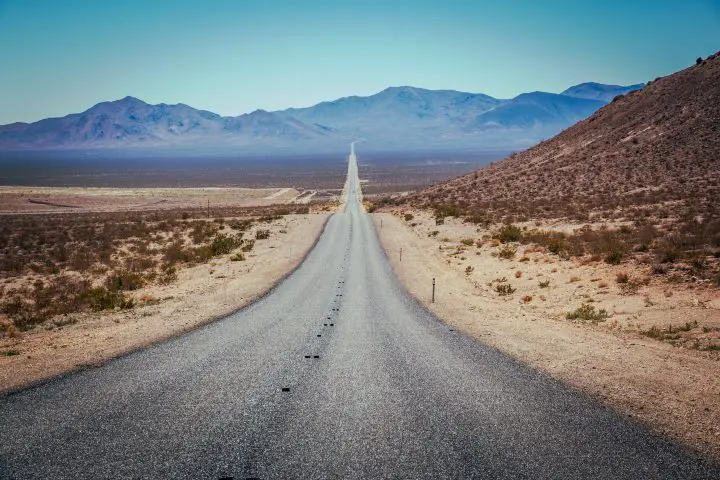
About Death Valley National Park
Death Valley is, simply, a fascinating place. You can find this desert on the eastern border of southern California, the Great Basin Desert, and the northern end of the Mojave Desert. In total, Death Valley National Park covers 3.4 million acres (5,270 square miles) of land and reaches into Nevada. The park is among the largest in the country.
Not only is the park one of the largest and most dramatic in terms of landscape and wildlife, but it’s also the lowest point in North America. A region of Death Valley known as Badwater Basin sits 282 feet below sea level, making it a surreal place to visit.
When is the Best Time to Visit Death Valley?
Death Valley National Park is open throughout the year. You can visit whenever you would like, though some months are more popular than others.
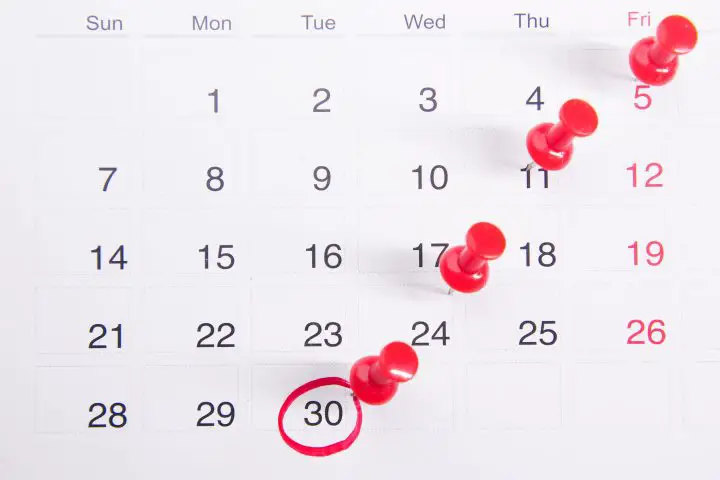
Keep in mind that Death Valley is one of the hottest places in the entire world, meaning that you have to be prepared for heat throughout the year. The surrounding mountains greatly influence the weather and temperatures, too. You will rarely see rainfall. In the summer, the daytime temperature easily reaches 120°F/48°C. When night time comes, the temperature drops to around 90°F/32°C.
Here is the breakdown of what to expect each season:
- Spring. Peak season. Between mid-March to April, crowds are the largest. The weather isn’t as hot, and you might see springtime wildflowers. Campgrounds and other accommodations are usually fully packed, so reservations are required well in advance.
- Summer. In May, the valley becomes too hot for most people, but people still visit. Touring by car is best during this time.
- Autumn. The fall season starts late October in Death Valley and brings cooler temperatures. Most lodgings are available at this time.
- Winter. The least crowded season. Expect cool days and colder evenings, with some rare rainstorms. The low light gives Death Valley a completely different ambiance from the spring and summer and is ideal for exploring on foot. Lodgings are widely available, though the holidays tend to be busy.
What to Bring to Death Valley
When traveling to Death Valley, you want to be prepared more than anything. There are several dangers to exploring one of the most arid regions in the entire world, including dehydration, sunburn, and heat stroke. Also, make sure your vehicle is prepared for the drive. You are going to want a high-clearance or 4WD vehicle to tackle the 785 miles worth of dirt roads.
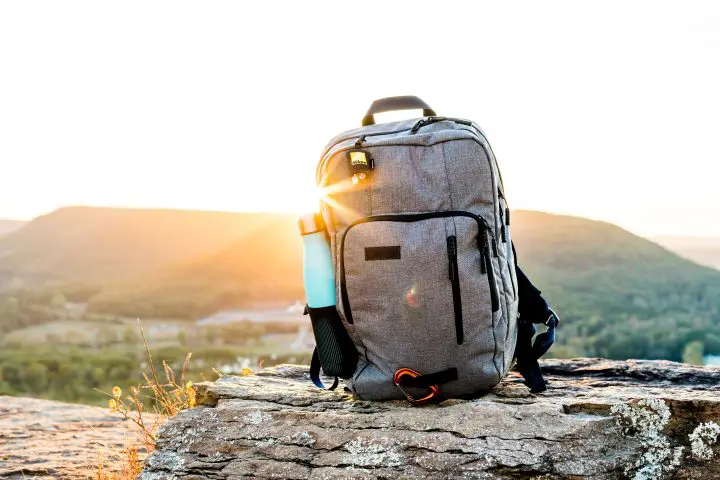
Pack for the worst case scenario!
Here are some things to bring with you on a trip to Death Valley
- A least 1 gallon of water per day for each person in your group
- Food—more than you would think
- Sunscreen
- Sun hat and sunglasses
- A cooler filled with ice
- First aid kit
- Layers of clothing (like UV-resistant hoodies or windbreakers)
- Smartphone
- Camera
- Binoculars
- Pocketknife
- Guidebook or map of the area
- Hiking shoes or boots
- Daypack
- Flashlight or headlamp if you plan on journeying around at night
Please keep in mind to Leave No Trace. Whatever you bring with you to the park should also leave with you. Furthermore, if you find something historical, like an object from a ghost town, do not remove a piece of it to bring home as a souvenir. Maintain and protect the land so others can enjoy their visit, too.
What to Do in Death Valley National Park
One misconception about Death Valley is that it’s a totally barren landscape. But it’s not. Throughout the year, the desert valley is brimming with life, song, and color. Life carries on, even in the extreme temperatures, and there is something for everyone young and old to enjoy.
Whether you are visiting Death Valley for only a couple of days or have a whole week or two planned out, you’ll soon find that your itinerary will be packed with options.
Here are 21 things to do in Death Valley:
1. Drive All The Death Valley Roads
Getting around Death Valley is part of the journey. There are dozens of roads that you can travel around the national park, though most of them require the appropriate vehicle. If you are coming from Las Vegas, be sure to head to Death Valley Junction, where you find a turn off for Highway 190 and stops like Twenty Mule Canyon and the famous Dante’s View.
Dante’s View gives you a stunning introduction to the landscape. You can see the salt-crusted basin below and mountains stretching off into the distance. From Dante’s View, you can find a number of short trails that introduce you to some of the park.
Continue on Highway 190 and you’ll eventually reach the visitor’s center at Furnace Creek. Be sure to talk to the rangers there about the trails and attractions. They will be able to point you in the right direction.
Furnace Creek is going to be your main pathway through the park, as it will lead you to many trails in the area.
2. Explore the Dunes of Stovepipe Wells
One of the most beautiful sights to see in Death Valley National Park are the dunes east of Stovepipe Wells, also known as the Mesquite Flat Sand Dunes. The angle of the sun in the late afternoon is ideal for highlighting the sand. Complete the image with towering mountains in the background, and you have visual magic.
These dunes are popular with tourists, since they are easy to get to and climb. In the spring, you won’t see a single swell of sand without footprints etched into them. If you love photography, this area is a great place to set up a camera and take some memorable shots.
Want to see the dunes spotless? Head out in the winter months or after the wind has died down. The dunes won’t have a single footprint on them, and you’ll have a priceless scene to adore.
3. Go For a Hike Around Badwater Basin
Welcome to Badwater Basin, the lowest point in the entire North American continent. The basin sits at 282 feet below sea level and is crusted with salt crystals. As the main attraction of Death Valley National Park, this is something that shouldn’t be missed. Why?
Imagine a sprawling plain full of crisscrossing lines and hexagonal patterns chiseled into whitish earth. It’s beautiful yet surreal; it’s something you really have to witness with your own eyes.
The best time to visit Badwater Basin is midday, when the sun is already up behind the mountains and there are shadows cast upon the crystals. You will see more of the patterns on the ground that way. Of course, keep in mind that others know this is the best time, too. Parking might be difficult, especially if the weather is decent.
There is a short boardwalk trail (1.8 miles round trip) you can do around the salt flats. This is a good option for those with children or who don’t want the sharp salt crystals hurting their feet.
4. Visit Mars, also known as Zabriskie Point
You might have heard of an alien landscape found in the US. That would be Zabriskie Point, one of the most photographed areas of Death Valley. The scenery here is nothing short of wild, with the quiet landscape and mountains in the background.
Zabriskie Point is also famous for its sunrises and sunsets. Since the area is highly accessible, thanks to a paved path, you can get to the best overlook easily. The walk to the top takes about 5 minutes from the parking lot. You won’t regret watching this Martian landscape change colors as the sun dips behind the mountains.
If you’re wondering where the name comes from, this area was named after the founder of the Pacific Coast Borax Company, Christian Brevoort Zabriskie.
5. Have a Heck of a Time at Devil’s Golf Course
Right next to Badwater Basin is another aptly named location in Death Valley: the Devil’s Golf Course. This area is riddled with jagged and gnarled salt and rock formations that make walking pretty precarious. You should take great care if you choose to walk around the area, because you might just end up with a hole in one…of your shoes.
That said, it’s another wonderful location to admire the multifaceted face of the desert valley. You can also take many more pictures and examine salt crystals up close, at your leisure.
6. Make a Drive to the Artist’s Palette
Some places can’t be described with words alone. Enter the Artist’s Palette, a brilliant display of Mother Nature’s creativity. If you were wondering what to do in Death Valley, this is one thing you cannot pass up. Artist’s Palette is near Furnace Creek, so you will drive by it on your way around the park.

As the sun goes down and the temperatures cool, the swirls of color (from minerals in the sand and stone) start to appear. The vivid swaths of pinks, orange, yellow, and gold will make your eyes pop. Go on a cloudy day, if you can, to truly revel in the majesty of this area.
On the side, if you opt to do the Artist’s Drive, you might see that there is an unmarked and unnamed canyon nearby. It’s about 3.4 miles into the drive or 1 mile away from the Artist’s Palette parking area. Park at a dip in the road then walk down in the canyon. In total, exploring the canyon takes about 30 minutes.
7. Visit the Park After Dark
Since Death Valley National Park doesn’t have a closing time, you can arrive whenever you want. The magic of the valley at night is unlike anything you have experienced before. Imagine crystal clear skies that give you a peak into galaxies without needing a telescope.
One of the most popular things to do in Death Valley at night is star gazing. In fact, the night sky here is classified as Gold Tier (the highest level possible) by the International Dark Sky Association. That means you can view all kinds of celestial objects clearly—more so than anywhere else in the world. If you are looking for excellent locations to stargaze from, consider Badwater Basin, Mesquite Flat Sand Dunes, Ubehebe Crater, or Harmony Borax Works.
There is also the annual Dark Sky Festival, which is held every Spring. Visitors are invited to learn more about space through hundreds of interesting topics and activities.
8. Walk The Golden Canyon and Gower Gulch
Banking on the term “short and sweet,” there is a pleasant hike through the Golden Canyon that leads to Gower Gulch. In total, the hike is 4.4 miles and takes a maximum of 3 hours. Golden Canyon is mostly sandstone—all jags and cliffs and sand. But as you work your way towards Manly Beacon, you get to see so much more.
Around Manly Beacon, you get to see sights similar to Zabriskie Point, and they are some of the finest views during the entire hike. Around sunset, the sky changes to purples and pinks, and the mudstone takes on a different hue.
The best part of the Golden Canyon hiking loop is that you can customize your journey. Depending on which way you turn, you could go on a strenuous climb or a leisurely stroll. You can turn around at Manly Beacon or continue down the slope into Gower Gulch, which takes you near old Borax mines. These mines aren’t open to exploration.
9. Listen to the Sand Sing at Eureka Dunes
The landscape of Death Valley is so varied, it’s no wonder the sights are so marvelous. And one of the greatest marvels would have to be Eureka Dunes, also known as the tallest dunes in California (and the whole US). The dunes can be a challenge to climb in the heat, but if you get to the top, you’re in for a treat.
Amid the whipping wind, you might hear something like humming. This phenomenon is caused by the wind passing over the dune, causing the sand to vibrate or “sing.”
The other stunning part of the Eureka Dunes? The backdrop. At the highest parts of the dunes, you will see the Last Chance mountains rising high with a stunning array of colors. Be sure to bring your camera.
Looking for even more dunes? Check out the Ibex Dunes—the hardest ones to reach by vehicle—and the Mesquite Flat Dunes, which are the easiest to visit and climb.
10. See The Darwin Falls
One thing that no one can deny is that Death Valley is full of hidden gems. You might be astounded to hear that one of the top things to do in Death Valley is visit a waterfall.
Yes, there’s a waterfall in the hottest, driest desert in North America. It’s called Darwin Falls.
The trailhead to the waterfall begins at the road leading to the Panamint Springs area. As you begin down the trail, you will be shocked to find that there is a tiny creak cutting through the dirt. You might even gasp when insects start to thrum and birds sing. There’s life and beauty in even the most arid of places.
So, you should definitely do the Darwin Falls hike. In about 2 miles total, you get to refresh yourself in a cooler environment, see a stunning waterfall in the middle of a desert (talk about an oasis), and take some amazing photographs.
11. Photograph Racetrack Playa
Of all the things to see and do, what is the best thing in Death Valley, you ask? The Racetrack Playa is a destination you didn’t know you needed in your life. This area is one of the most mind-boggling sections of the Death Valley map. You will notice that the playa is nothing but a dried track of mud and a few stones pebbling the way.
But if this whole mud flat is just, well, mud then how did those stones get there? How are they moving? The phenomenon is known as floating or sailing stones, and they leave a faint trail in the mud behind them. There is a lot of speculation about how this is happening, but there aren’t any concrete answers yet.
One hypothesis is that wind and rain make the mud slippery. Factor in the 50+ mph wind gusts, and it might just be enough to push stone through mud. Regardless of how it happens, the effect of these random stones and the paths they leave is sure to grab your attention.
Now, here’s the thing: It takes effort to get to this beautiful wasteland. You have to drive about 27 miles on an unpaved road covered in rough gravel. Make sure your vehicle has a high clearance and off-roading tires.
Oh, and don’t forget to stop by Teakettle Junction on your way to Racetrack Playa for a picture. It’s a must.
12. Seek Out The Lee Flat Joshua Tree Forest
Most people don’t visit Death Valley with the hope of seeing Joshua trees, but it turns out Death Valley is home to the trees too. In fact, there is a large forest, the Lee Flat Joshua Tree Forest, situated at higher elevations within the park. If you have never seen these incredible trees, take the time to seek out the forest. It’s near the west entrance of Death Valley.
Keep in mind that the Lee Flat is higher than most of the park, so you can expect a dramatic temperature difference here. In fact, there is a notable 20-degree (F) difference between the Joshua tree forest and Badwater Basin.
Head to the forest around sunset to get the full kaleidoscopic effect of the trees and shrubbery.
13. Do The Ubehebe Crater Hike
Pronounced “YOU-BE-HE-BE,” this crater is another cool attraction in a very intriguing park. Ubehebe Crater wasn’t made by an asteroid but from volcanic activity, explaining the striking shifts of color around and in the crater. You will find this location to the north, close to Scotty’s Castle (mentioned below). Don’t forget to also visit the Little Ubehebe Crater, which is thought to be more photogenic than the bigger one.
The hike around both craters is about 2.2 miles long from start to finish and takes about 1-2 hours. As you walk around the area, you get a chance to look down into the 400-foot deep hole that spans half a mile wide. Part of the trail also heads into the larger crater, giving you the opportunity to see the rock formations up close.
14. Find The Natural Bridge
Hankering for an easier hike? Check out the trail to the natural arch bridge. The ground remains relatively flat throughout, and it takes you up to a natural and very photogenic rock formation. Additionally, the hike takes about 45 minutes to 2 hours to complete, giving you enough time to see many other sites in the park.
It’s recommended to go when the sun dips a little lower, since the shadows will help the arch stand out more clearly. The colors of the rocks also become more brilliant, rather than being washed out by the sunshine. That, or go earlier in the morning.
15. See the Sunrise From Aguereberry Point
Wondering what to do in Death Valley in the early morning? Here’s the answer: Visit Aguereberry Point. Most people will go to Zabriskie Point to see the sun come up in the morning, but Aguereberry Point is the chef’s kiss of sunrises. Why?
Because you face the sun as it comes up, so the colors of the rays are much more dazzling. Colors within the rock and sand stand out in a brighter contrast, leaving you in awe.
The best part is that you won’t have to worry much about crowds or a long hike. Drive right up to the point and take a short walk to the vista. Since Zabriskie Point is far more popular, you won’t have to fight anyone for front row seats to a breathtaking sunrise.
16. Discover The Surprise Canyon
If you haven’t guessed by now, Death Valley is not boring or predictable. Surprise Canyon is another great name for a place that is sure to delight anyone in your group, even the unhappiest of campers. The Surprise Canyon Hike is 6.3 miles roundtrip and takes about 4 hours to complete, though you could always have a miniature picnic among the wildflowers.
You might be lucky enough to see some wild burros (before they disappear from the area), waterfalls, and a little brook. Keep in mind that the pathway is mostly uphill on the way in and goes downhill on the way out, so everything you see will feel like a surprise.
17. Take a Cool Walk Through Marble Canyon
Too hot outside? Marble Canyon has plenty of shade. There are two versions of the Marble Canyon hike. The first is shorter and provides plenty of rest spots to drink water and have a snack. You can also enjoy the rocky cliffs and colors. Since most of the pathways are narrow, there is also a bit of suspense, especially for younger children.
Want to do the whole trail? Be prepared to walk 31 miles. If you aren’t prepped for that, no worries. The shorter loop through the canyon gives you plenty to see.
If you’re looking for a more difficult hike through a canyon, there is another option for you: Mosaic Canyon. In 4 miles of moderately difficult terrain, you might just find out that rock climbing is your next obsession. The canyon consistently narrows and opens up throughout the hike, so those 4 miles take you about 2-3 hours to complete.
Another canyon, Grotto Canyon, is the double black diamond of Death Valley trails. Highly challenging, you will need to scramble up rock walls and under obstacles to complete it. Some parkour knowledge might help!
18. Climb to the Top of Telescope Peak
You went to the lowest point in the US, now prepare yourself for the highest elevation in Death Valley. Telescope Peak reaches an elevation of 11,043 feet (3,366 meters). Due to the height, don’t be surprised to see snow capping the peak. While the rest of the land is sweltering, snow clings to the lofty reaches of Telescope Peak.
And yes, you can climb it. The hike up the mountain is 14 miles long, so be prepared for a challenge. The view from the top, though, is absolutely breathtaking.
Not up for the hike? You can always see the majesty of Telescope Peak from Lee Flat Joshua Tree Forest. Sunrise is one of the best times to see it, because the light shines over the snow, highlighting the shape of the peak.
19. Visit Scotty’s Castle
Some will call the location Death Valley Ranch, though it is best known as Scotty’s Castle. Once, it was meant to be a dream home set up along the Grapevine Canyon. Supposedly, the castle was constructed above a literal gold mine. The work began in the 1920s, but construction was never fully completed. Now, it’s a relic that you can visit.
Since 1970, park rangers would dress up in clothing of the 1920s and 30s and lead visitors around the castle, giving the story of Death Valley Scotty. In 2015, terrible flooding ruined sections of the buildings. As of 2021, the castle grounds are closed off because of the flood damage, but you can look upon the structure from afar. It is estimated that the castle will reopen in late 2022 or 2023.
20. Walk The Salt Creek Boardwalk
When you’re planning out what to do in Death Valley, always consider the unexpected. Case in point: Salt Creek. You probably didn’t expect one of the hottest places in the world to have a little creek trickling through it—and for that water to be surrounded by relatively thick vegetation. The Salt Creek Boardwalk wends through all this, making it feel less like a desert and more like a beach.
The long walk takes you throughout the area, giving you multiple chances to see the rare pupfish, a kind of fish that has evolved to survive life in the desert. Though they can be difficult to spot, if you know what to look for, you’ll see one or two soon enough. One way to find them is to look for shrubs that hang over the water. Give the shrub a shake, and the fish hiding in the shadow will flee.
Overall, the hike around the boardwalk is very gentle. Anyone can do it, and the surface is flat enough for wheelchairs or strollers. There are also several hiking trails that jut off from the boardwalk, some leading to beautiful vistas.
21. Check Out Surrounding Attractions
Visiting Death Valley puts you in a great position to see the rest of the area. Yes, Death Valley is massive and you probably will have a full itinerary ahead of you, but if you end up looking for day trips away from the park, you aren’t without options. As mentioned earlier, Death Valley is a short drive from Las Vegas, NV.
The desert is also close to the Mojave National Present, Inyo National Forest, Kings Canyon National Park, Sequoia National Park, Charleston Peak, Mount Whitney, Grapevine Peak, and Red Rock Canyon National Park. But that’s just nature-based things to do.
There is the Amargosa Opera House, Borax Museum, Goldwell Open Air Museum, Rhyolite Ghost Town, and Tecopa Hot Springs to enjoy. Learn a little about the area, see some history, and then relax. Sounds like a heavenly trip, wouldn’t you agree?
A Trip So Fun, It Could Be Deathly
No, a rip to Death Valley isn’t going to get you shaking hands with the Grim Reaper, but you can take a trip to the Devil’s Golf Course and more. There are so many things to do in Death Valley, that even our extensive list is just scratching at the surface. If you want to experience a landscape unlike any other, a trip to Death Valley National Park should be added to your travel plans right now.
FAQs
How much time do you need for Death Valley?
The more time you can spend in Death Valley, the better; but for the best time, you should spend at least two days in the area. Two days will give you access to the best things to do in Death Valley, such as Badwater Basin, Eureka Dunes, Raceway Playa, and more. If you plan on exploring further out or taking hikes through the park, you will need at least 3-4 days to see everything.
But even if you only have one day in Death Valley, such as coming for a day trip from Las Vegas, there are still plenty of things to discover in the area.
Is Death Valley worth visiting?
Between the stargazing opportunities, scenic drives, hikes, roadrunners, singing sand dunes, and incredible landscapes, Death Valley is definitely worth a visit or two. Whenever you go throughout the year, Death Valley has something unique in store for you. Be sure to plan a visit when you can.

